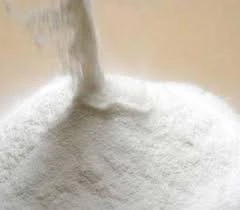
Каст . 12, 2024 06:28 Back to list
Exploring Hydroxypropyl Methyl Cellulose Applications and Properties in Various Industries
Hydroxypropyl Methyl Cellulose (HPMC) A Versatile Polymer for Modern Applications
Hydroxypropyl methyl cellulose (HPMC) is a widely utilized cellulose ether with significant applications across various industries, including pharmaceuticals, food, cosmetics, and construction. Its versatility, biocompatibility, and ability to form stable solutions make it an indispensable ingredient in numerous products. With a CAS number of 9004-65-3, HPMC is synthesized through the modification of cellulose, which is a naturally occurring polymer derived from plant cell walls.
Chemical Structure and Properties
HPMC is derived from cellulose by substituting hydroxyl groups with hydroxypropyl and methyl groups. This modification enhances the solubility and functionality of the polymer. The degree of substitution can vary, leading to differences in viscosity and solubility in water, which makes HPMC adaptable for various applications. Generally, HPMC is odorless, tasteless, and non-toxic, making it safe for use in food and pharmaceutical products.
HPMC exhibits thermal stability and resistance to microbial degradation, which is particularly valuable in both food preservation and pharmaceutical formulations. It can function as a thickening agent, emulsifier, film-forming agent, and stabilizer, depending on the required characteristics of the product.
Applications in Pharmaceuticals
One of the most significant applications of HPMC is in the field of pharmaceuticals. It is commonly used as a binder in tablet formulations, helping to maintain the integrity and stability of the tablets. Additionally, HPMC serves as a controlled-release polymer, allowing for the gradual release of active ingredients over time, which enhances therapeutic efficacy and patient compliance.
HPMC is also a popular choice for capsule formulations, where it can replace gelatin, making it suitable for vegetarian and vegan products. Its ability to form transparent films further extends its utility in ophthalmic solutions, where it acts as a lubricating agent to alleviate dry eye syndrome.
hydroxypropyl methyl cellulose cas no

Role in the Food Industry
In the food industry, HPMC is valued for its ability to improve texture, viscosity, and stability in various products. It is often employed as a thickening agent in sauces, dressings, and dairy products. Due to its emulsifying properties, HPMC helps stabilize emulsions, which is crucial for maintaining product consistency and appearance.
With increasing consumer demand for gluten-free products, HPMC has found a place in gluten-free baking. It provides the necessary structure and moisture retention in gluten-free formulations, ensuring a desirable texture in baked goods. Furthermore, HPMC acts as a fat replacer, contributing to lower-calorie foods while maintaining palatability.
Applications in Construction
Beyond food and pharmaceuticals, HPMC plays a vital role in the construction industry. It is commonly used in cement-based products such as plaster, mortar, and tile adhesives. HPMC enhances workability, water retention, and adhesion properties of these materials, which improves performance and durability. The use of HPMC in construction materials also aids in reducing the environmental impact, as it allows for the use of lower water content in formulations.
Conclusion
Hydroxypropyl methyl cellulose (HPMC) is an extraordinary polymer with a plethora of applications spanning multiple industries. Its unique properties, including biocompatibility, versatile solubility, and functional performance, make it an essential component in pharmaceuticals, food production, cosmetics, and construction materials. As research and innovation progress, the potential uses of HPMC continue to expand, promising advancements in product formulations and applications.
In summary, HPMC stands out not only for its practical applications but also for its role in promoting sustainability and health-conscious practices in various sectors. The future of HPMC appears promising as more industries recognize its benefits and find creative ways to incorporate this versatile polymer into their products. As such, understanding HPMC’s properties, benefits, and applications allows industries to harness its full potential and cater to the evolving needs of consumers and the environment.
-
Versatile Hpmc Uses in Different Industries
NewsJun.19,2025
-
Redispersible Powder's Role in Enhancing Durability of Construction Products
NewsJun.19,2025
-
Hydroxyethyl Cellulose Applications Driving Green Industrial Processes
NewsJun.19,2025
-
Exploring Different Redispersible Polymer Powder
NewsJun.19,2025
-
Choosing the Right Mortar Bonding Agent
NewsJun.19,2025
-
Applications and Significance of China Hpmc in Modern Industries
NewsJun.19,2025







